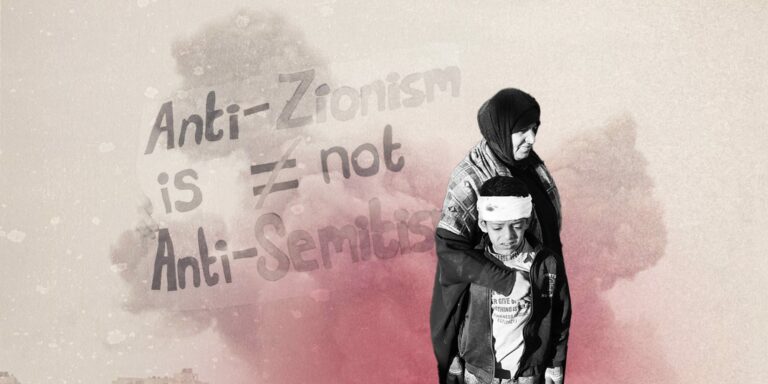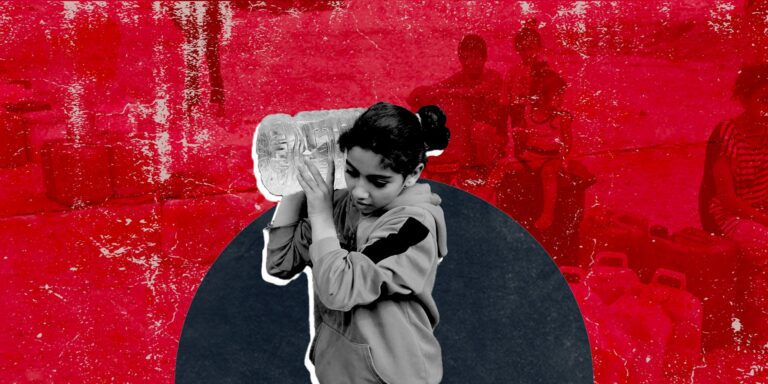Exactly a decade and one week before the current round of fighting, on the 1st of October 2013, the (then and now) Prime Minister of Israel, Netanyahu, framed the relations with Iran in terms of the actions of King Cyrus the Great, as narrated in the Old Testament. He drew parallels between events believed to have happened 25 centuries ago, and the present. ‘We are an ancient people. We date back nearly 4,000 years to Abraham, Isaac and Jacob,’ he said. Then he went on to narrate how the founding king of the ancient Persian Empire decreed the return of Jews from exile in Babylon to the land of Israel (i.e. historic Palestine), before contrasting it to the policies and rhetoric of the Islamic Republic. Netanyahu’s reference to the Amalekites late last October, implicitly identifying them with contemporary Palestinians, is only more of the same. The Amalekites are a favourite reference for the Israeli extreme right. They, paternal cousins of the ancient Israelites (descendants of Esau, twin brother of Jacob), were a perpetual enemy. No peace with them possible. Instead, as per the Old Testament’s words, total annihilation was the only remedy for the curse that is the Amalekites. Beyond a (sacred) call for genocide, history here is fused with the holy, and a nationalist project (i.e. Zionism) is making its claims both, absolute and contemptuous of any other conviction, reading of scripture, or even life.
The pattern is not unfamiliar. On Christmas Eve 2016, the Israeli ambassador, angrily reacting to a UN Scurity Council Resolution condemning his country’s policies of gradually taking over the whole of the city of Jerusalem (in defiance of international law), waved a copy of the Bible: ‘This holy book, the Bible, contains 3000 years of [the] history of the Jewish people in the land of Israel. No one, no one, can change this history.’ Under three years later, in late Apil 2019 (4 years and a half before the 7th of October 2023), the same Israeli diplomate, Dany Dannon, addressing the same UN body, and specifically defending Israeli settlements expansion in the (occupied, according to international law) West Bank, quoted the Bible. Rather than the ‘West Bank’, Dannon called it Judea and Samaria, the area’s Jewish biblical name. Asked specifically about international law in relation to settlements’ expansion, he replied: ‘Before we discuss international law, we must understand the context and facts. Today I will present to you the … pillars that prove the case for Jewish ownership of the land of Israel. The first … is the Bible. The Jewish people’s rightful ownership of Eretz [Greater] Israel, the Land of Israel, is well documented throughout the Old Testament and beyond. The second pillar is history. The Jewish claim to the land of Israel is confirmed time and again, not with Jewish history, but with the history of the world.” As for international law, it came third. ‘Let us discuss our first pillar of proof, the Bible. The Jewish People’s right to the land of Israel is mentioned over a dozen times in the Tanakh, the Hebrew Bible.’ Then he quoted, in Hebrew, biblical text that promises ‘the lands of Israel’ (named in the text Kanaan, i.e. the entirety of historical Palestine) to Jews (he overlooked other texts in Gensis and Exodus that extend Eretz Israel to the Euphrates and the Nile). This precedence of the perceived-as-sacred (by one party, disregarding others) is inseparable from the rise of Israeli right, the extreme fringes of which are present in Netanyahu’s current government.
Late last month (Oct. 2023), while large swathes of Gaza were being flattened with little or no regard to non-combatants’ wellbeing, Palestinians in the northern part of the occupied West Bank, found leaflets with the (partially-quoted) text below, in Arabic, attached to their vehicles and tractors:
‘You Sought War, so await the Great Nakba [Catastrophe, the Arabic term used to refer to the creation of the state of Israel in 1948]. To families of the enemy in the Jewish [West] Bank: the ISIS-like organisation of devilish mass murderers [i.e. Hamas] who are seeking havoc on earth, made the biggest … mistake by declaring war on us … You sought a Nakba similar to 1948, so by God we will bring upon your heads the greatest of afflictions soon. You have your last chance to flee to Jordan in an organised manner. For after that we will finish off every enemy and we will evict you by force from our Holy Land that God had granted us, and which He had ordered us not to abandon … so that the Word of Our Lord is realised, [a reward] for our patience with you.’
This threat was from some of the more-than 700,000 Israeli settlers in the West Bank (or, more accurately, ‘colonisers’, as they forcefully inhabit non-Israeli occupied lands according to international law).
While there is much to read in this text, most telling is the reference to the Nakba of 1948 (War of Independence in official Israeli jargon) and its disastrous impact on the Palestinian population, for which the Israeli official line traditionally denies any responsibility (in spite of, thanks to Israeli revisionist historians, well-documented accounts of ethnic-cleansing of the Palestinian population of much of the then-nascent State of Israel).
The ongoing, years-long, tragedies of siege and occupation in Gaza and East Jerusalem notwithstanding, few paid sufficient attention to what the West Bank had been witnessing lately. Between Nov. 22 (when Netanyahu’s last cabinet took control) and early Oct. 23, at the hands of Israelis, some 240 Palestinian deaths are documented, including 40 children. Many of these were the outcome of settlers’ attacks on Palestinian village and properties, some occurred during operations of the (so-called) Israel Defence Force in the refugee camps in the West Bank, again the occupied West Bank where the Israeli presence is in defiance of international law (in addition to hundreds of arrests, in excess of 150 Palestinians have been killed in the West Bank after the 7th of October).
Recently, the talk of the ‘ISIS-like’ Hamas has been relentless. However, to put such a comparison in perspective, one should, at least, look at members of the Israeli cabinet of the last 12 months. Two names tell us a lot: Itamar Ben-Gvir, and Bezalel Smotrich. A settler himself, known as a the glorified lawyer for the settlers and all they do, leader of the far-right Jewish Power political party, originally a follower of Meir Kahane and his (banned in Israel) Kach extremist movement, Ben-Gvir (b. 1976), whom Netanyahu appointed as minister of national security, faced a total of 53 indictments in the Israeli courts, and was convicted 7 times, on account of his extremist political beliefs. On account of his beliefs, he was denied military conscription. An article about him in the New Yorker published a few months ago tells us that a picture of another follower of Kahane, Baruch Goldstein, who massacred 29 Palestinians in Hebron in 1994, adorned the Ben-Gvirs’ living room until his political rise made him put it aside (this bloodbath is known as the Cave of the Patriarchs’ Massacre). Some accused Ben-Gvir of agitating for the killing of Yitzhak Rabin back in 1995. Yigal Amir, the killer of Rabin was yet another follower of Meir Kahane (Kach was deemed a terrorist movement after Rabin’s assassination). As the minister of national security, Ben Gvir worked to achieve a massive increase in the number of gun licenses granted to Israeli non-combatants. It is widely understood that the primarily intended beneficiaries of this policy are his fellow settlers in the West Bank.
As for Smotrich (b. 1980), the leader of the Religious Zionist Party, also a settler in the occupied West Bank, he is Netanyahu’s minister of finance. Once in office, he took charge of the expansion of settlements and made the building process there significantly easier (permits-wise). Among other similar statements, in the Knesset, back in 2021, he addressed his Arab fellow members: ‘You’re here by mistake, it’s a mistake that Ben-Gurion didn’t finish the job and didn’t throw you out in 1948’ (note again, the open admission of Israel’s responsibility for the Nakba, the ethnic cleansing of Palestine). In a mourning ceremony he attended in France last March, he stood on a podium with an Israeli flag that included, in addition to the whole of historic Palestine (i.e. no Palestinian territories), most of the Hashemite Kingdom of Jordan, which, expectedly, caused a diplomatic problem. Also, last March in France, according to an article the CNN website published, Smotrich denied the existence of a Palestine or a Palestinian people. He is quoted: ‘Who was the first Palestinian king? What language do the Palestinians have? Was there ever a Palestinian currency? Is there a Palestinian history or culture? Nothing. There is no such thing as a Palestinian people.’ These words triggered many statements of condemnation, one of them from the US National Security Council Spokesman, John Kirby.
Expectedly, under a cabinet peopled by the likes of Smotrich and Ben-Gvir, the already-aggressive settlers grew more rapacious. Again, we are only speaking of more of the same. About 10 years ago settlers in the West Bank were around 500,000, today they number over 700,000, with a network of roads connecting their settlements (colonies to be exact) that Palestinians, the people of the occupied land, are not allowed on. The village of Huwarra near Nablus, surrounded by three settlements, has been a particularly flammable point of tension. Another violent round of clashes erupted last February after two settlers, brothers, were killed. The settlers’ retaliatory and indiscriminate rampage was so violent that the Israeli military commander of the West Bank called it a ‘pogrom’, the connotation of the term to anyone familiar with the history of the persecution of European Jews hardly needs pointing out.
A figure central to these clashes, a leader of the settlers’ community, Daniella Weis, was interviewed last Feb. on i24, the English-language Israeli television channel. The presenter asked Weiss: “Do you condemn the attack by … settlers … on Huwarra last night, they put 35 [Palestinian] houses on fire while people were in them, and … cars … on fire … ?’ After a diatribe against the Palestinian Authority that ‘supports terror against Jews’ and speaks ‘against new settlements in Judea and Samaria,’ (how dare they!) the presenter had to stop her. He repeated the question. She replied, ‘Believe me I heard you, and I say I condemn one thing: the killing of Jews.’ In the same TV interview she stated that Ben-Gvir and members of his party were on their way to hold a meeting in one of the settlements at the heart of the flare-up. As for Smotrich, he was quoted to have said that Huwarra should be ‘erased’.
It should be disturbing, not that Amichai Eliyahu, the Israeli Minister of Heritage, from Ben-Gvir’s party, stated publicly that dropping an atomic bomb on Gaza is ‘an option,’ but that anyone was surprised by such a comment from this party and that cabinet, and after the history any student of Israel knows. Who would be surprised if such a comment came in the opposite direction: from Hamas or Islamic Jihad about Israel? Hardly anyone! However, valuations and reactions remain, inexplicably and illogically, different.
Articles in Israeli newspapers, especially in the last few weeks (e.g. Haaretz, The Jerusalem Post and The Times of Israel) speak of an objective, albeit implicit, alliance between Netanyahu and the Israeli right, and Hamas’ rule in Gaza. Bibi, as known in Israel, consistently refused, blocked or sabotaged attempts to stop funds coming to Hamas from Qatar (in cash) or to allow large security operations against the Muslim Brotherhood offshoot (i.e. Hamas), or specifically the assassination of some of its key leaders. His avowed rationale was repeatedly that of killing any possibility for a peace process. A strong Hamas weakened the Palestinian Authority in Gaza, and allowed for saying to the Israeli left and the world that a partner for peace does not exist (and for this Hamas’ rhetoric often came in handy). As Smotrich, then a newly elected member of the Knesset, back in 2015 put it: ‘Hamas is an asset and Abu Mazen [i.e. Mahmud Abbas] is a burden.’
This all sounds malicious enough, and it proved ultimately disastrous for the Israel’s security (as many had warned). Yet, this ‘objective’ alliance has more to it than meets the eye. The extreme, religion-inspired rhetoric on either side mirrors its counterpart. No compromise is possible. A logic of annihilation, indiscriminate
revenge and uncompressing oscillation between the maximalist and the nihilist is on both sides here. In a sickening symbiosis, if not harmony, the Israeli right and Hamas nourish each other at the cost of numerous (overwhelmingly Palestinian) lives. An ISIS-like spirit is common. The far greater blame, however, lies with the infinitely stronger belligerent. After all, Goliath was never the Palestinian side of this story.






